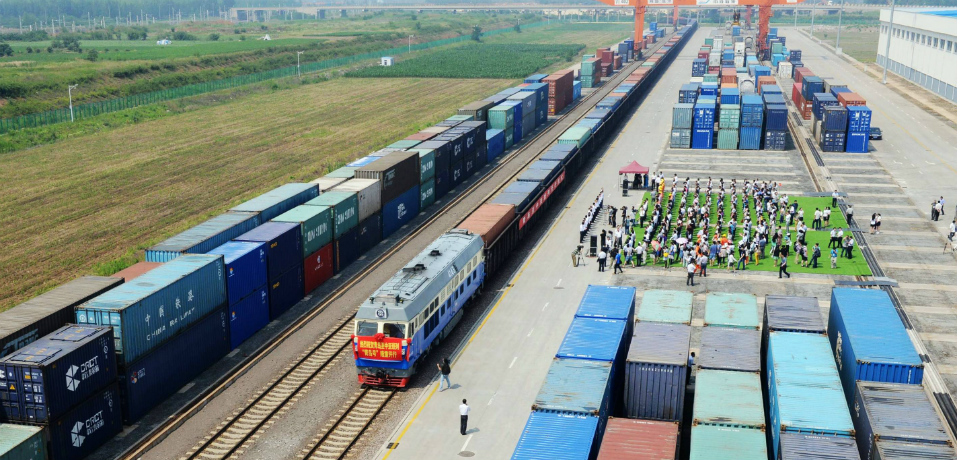
In September 2013, a five-point proposal to jointly build a New Silk Road Economic Belt was unveiled by President Xi Jinping in Astana during his 10-day visit to Central Asia. A month later he also outlined a complementary vision of a 21st century Maritime Silk Road during a speech to the Indonesian parliament.
On May 14-15, the presidents of Kazakhstan and Indonesia were both on hand in Beijing, along with 27 other heads of state or government, to collaboratively chart the next steps forward with President Xi at the Belt and Road Forum for International Cooperation. Earlier in March 2015, a Vision and Action Plan listing a set of guiding principles and cooperation priorities and mechanisms had been released.
When the Belt and Road Initiative (BRI) is fully realized, it will comprise a far-flung network of highways, railways and connectivity corridors, both brick-and-mortar and digital, as well as a set of port infrastructure and blue economy projects that link China by road and sea as far as Europe and Africa via South, Southeast and Central Asia and the Middle East. Tellingly, it is being billed as the “project of the century.”
The logic of the initiative is at once both simple and revolutionary. In resurrecting the ancient silk routes that had embodied the spirit of peace and cooperation, openness and inclusiveness, and mutual learning and mutual benefit, China aspires to preserve and consolidate the ideals of the United Nations-centered, post-World War international order that it had fought to create. Equally, by reviving the spirit that underlay these ancient routes, China also aspires to write – and share – a bright new chapter in global development that is informed by the growth model that facilitated its meteoric rise and lifted hundreds of millions out of poverty. This emphasis on growth and development is particularly apposite at a time when the global economy is constrained by a relative lack of growth drivers.
International cooperation on production capacity-sharing and between China and other middle income, developing and less developed countries forms a core element of BRI. Detractors have branded this as a barely transparent attempt to offload its excess and outdated production capacity to susceptible neighboring countries. Such criticism is misplaced. To the contrary, such production capacity cooperation is informed by China’s own successful post-1978 model of industrial development and upgradation. That model was premised on two cardinal tenets.
First, as an agrarian, labor abundant but capital and resource scarce economy, China’s industrial structure needed to conform to its prevailing – not preferred - factor endowments. Corresponding investments that would jumpstart growth, notably direct investment in human and physical capital rather than soft institution-building, too, had to be geared to near-term domestic realities rather than abstract rich society prescriptions or a one-size-fits-all model. As this investment in human and physical capital accumulation translated into a virtuous cycle of growth and poverty reduction, industry would need to upgrade its existing structure and scale the production value-chain at a rate that was as swift as China’s rapid level of development.
Second, trade liberalization and market forces were to be the primary mechanisms for resource allocation. Yet due to infrastructure deficiencies, institutional shortcomings, rent-seeking, and a general lack of competition, industrialization-led development could not be left to market forces alone. Active industrial policy was a necessary complement. As industry scaled the product-sophistication ladder, government’s interventionist touch and its accompanying hard and soft infrastructural enhancements, too, needed to evolve to facilitate such an upgrade of the production base. And until China attained middle-income status, this symbiotic relationship between activist policy and production structure would need to flexibly adapt to the country’s rapid level of development.
The success of China’s three decade-long experience with production capacity management can be originally attributed to the international production capacity transfer that it received at the outset from its foreign partners as it opened-up to the outside world. Huge competitive strengths have been amassed over the past decade-and-a-half in sectors such as electronics, construction materials, railways, machinery, aviation and maritime engineering. By moving these production lines abroad as part of BRI, China can now pay it forward and assist its developing and less-developed country partners to create jobs, improve industrial capacity, and stimulate growth on lines that bear a resemblance to China’s own industrial jump-start in the 1980s.
In Central Asia, such production capacity cooperation could range from co-funding and construction of strategically important trans-border transportation corridors, and industrial and digital logistics hubs, as well as fertilizer and synthetic fuel plants. In Africa, production capacity cooperation could crack the development bottlenecks of backward infrastructure, human resource limitation, and inadequate finance. By facilitating agricultural modernization and industrialization, it could also rid these countries of overdependence on commodity exports as their solitary growth driver.
Much as the relocation of East Asian labor-intensive industry to lower-wage China stirred a virtuous economic cycle that went much beyond mere capital accumulation, so also China-Africa production capacity cooperation and transfer can create a sum bigger than its parts. Far from being a new form of colonialism, as the critics have panned it, the transfer of industrial capacity and world-class infrastructure will reduce transaction costs in Africa and enable these countries, as ex-chief economist of the World Bank Justin Yifu Lin has pointed out, to unleash a dynamic upward spiral of growth and development in sectors where they enjoy latent comparative advantages.
The open-ended design, the level of ambition and the long-term vision that underpins BRI attests to President Xi’s resolve to elevate peaceful development to the forefront of China’s economic diplomacy. The reference to the ‘belt’ and ‘road’ concepts in the reform document that was unveiled after the 3rd plenary session of the 18th Central Committee meeting in November 2013 also attests to the transitional imperatives facing the Chinese economy – particularly the need to derive domestic growth drivers beyond its successful but dated producer-side model. That model, which China now seeks to export to its developing-country peers, had been authored by Deng Xiaoping exactly 35 years earlier at the 3rd plenary session of the 11th Central Committee meeting in November 1978.If the ‘belt’ and ‘road’ is to be Xi Jinping’s lasting legacy 35 years down the line, he must engineer an analogous rebalancing of the Chinese growth model to a more consumption-led one with the same political acumen and zeal that Deng displayed four decades earlier. When China ultimately serves as a ‘consumer of last resort’ for the increasingly sophisticated industrial-goods exports of its rapidly growing developing and less-developed country partners, BRI will truly have bolted the development strategies of numerous countries, sought out complementary win-win advantages, and realized the common development and prosperity that it had envisioned for a vast chunk of humanity. Success abroad must first begin at home.


